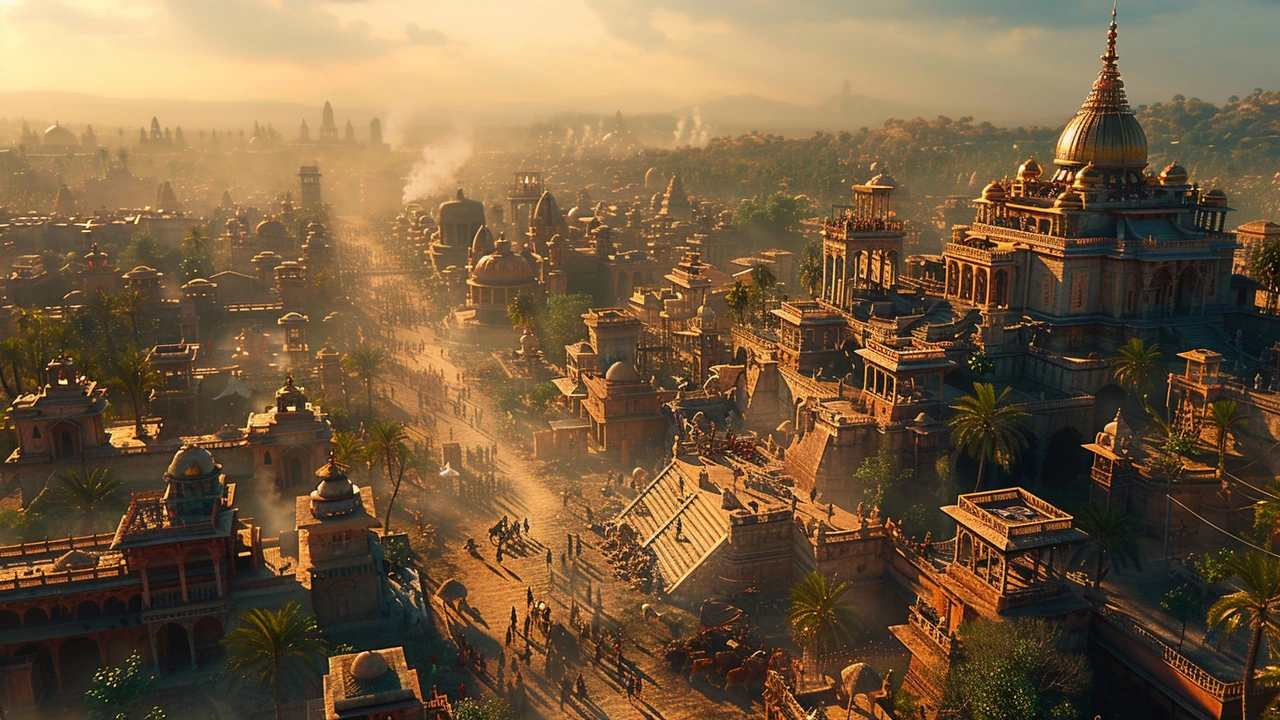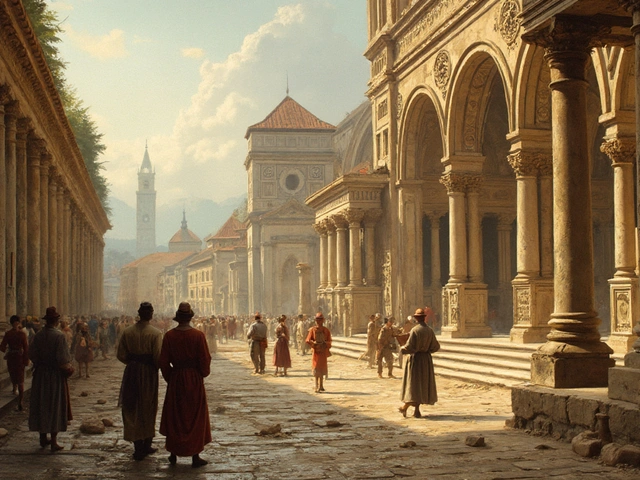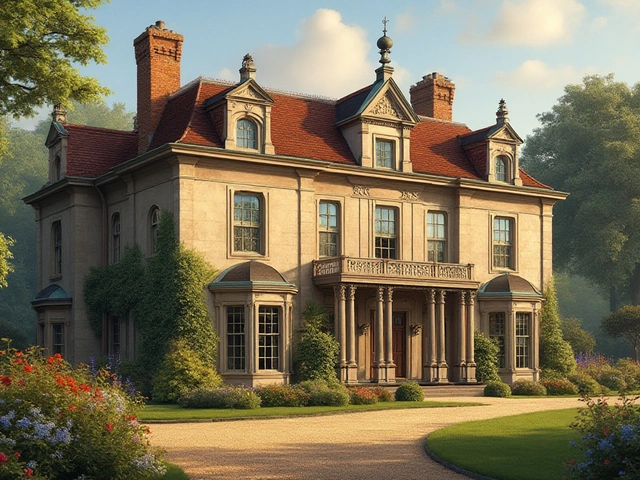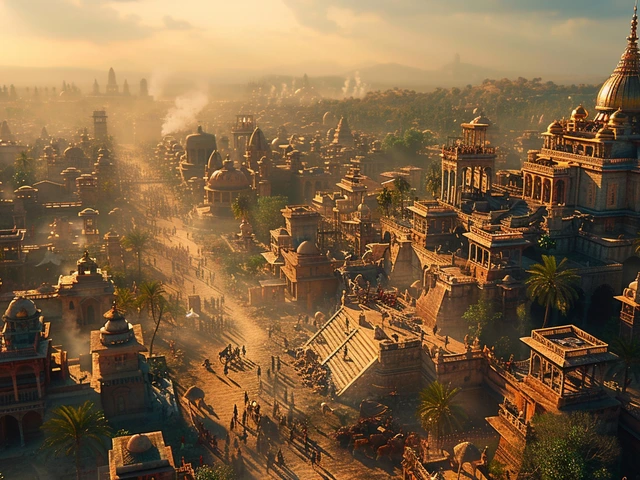Introduction to the Magnificent World of Renaissance Architecture
Peering into the architectural style of the Renaissance, as Theodore, is like stepping into a time machine set to the heart of the 15th century. Brimming with grandeur and elegance, the Renaissance architectural style is often recognized as a tangible manifestation of human potential. The key elements that comprise this illustriously gleaming epoch of architecture, are captivating and visually addictive. So, fasten your seatbelts and embark on this picturesque journey into an era marked by extraordinary architectural ingenuity.
The Birth and Evolution of Renaissance Architecture
The womb of the Renaissance architectural style was Italy, particularly Florence, during the early 15th century. The movement, as it gestated, grew in response to the heavy and elaborate gothic architectural style that had prevailed. If you could imagine, it was kind of an architectural teenage rebellion. The Renaissance architects, led by the likes of Brunelleschi and Alberti, were innovative revolutionaries in their own right, rejecting their gothic inheritance and seeking inspiration from the man-made structures of ancient Greece and Rome. It was as if they'd stepped back to catapult forward.
Humanism and The International Spread of Renaissance Architecture
More than just a style, Renaissance architecture embodied the philosophical shift of the period, Humanism. This was a pivot towards the potential of mankind, focusing on human ability and achievement. This switch in mindset seeped into the very edifice of the buildings erected in this period. The clear linear perspectives, perfect geometries and proportions were all an attempt to mirror the harmony of the natural world which humans were part of. When you understand this connection, Renaissance buildings feel more like a tribute to mankind than mere structures. And trust me, this inheritance of humanistic thinking was not contained. Like a swift wind, it carried seeds of Renaissance architecture across Europe, leaving its echoes resonating within the walls of many great Western buildings.
The Physical Characteristics That Define Renaissance Architecture
The physical characteristics of Renaissance architecture, from the outside, appear beautifully consistent with their imagined blueprints. The buildings of this era typically exhibit symmetrical plans and elevations, with round arches, columns, and classical ornamentation. One could say, it's as if the architects, each time, set out to manifest an ideal beauty, and the results were a magnificent harmony of geometry, symmetry, and proportion. The structures stand as vision of an ordered cosmos, echoing the sentiments of those Renaissance architects.
The Heroes of Renaissance Architecture: Major Architects and Their Masterpieces
The Renaissance era was blessed with the genius of many trailblazing architects, each leaving an indelible mark on the aesthetics of the age. Among them, the gallant triad of Brunelleschi, Alberti, and Michelangelo undoubtedly stand out. Brunelleschi's masterpiece, the Dome of the Florence Cathedral, is a perfect exemplification of the marriage between technology and art. Alberti's treatises on architecture are still as influential today and as groundbreaking as his works, including the Basilica of Sant'Andrea. And of course, who could overlook the sublime perfection of Michelangelo's creations, with St. Peter's Basilica being a sight for the gods. These maestros left their fingerprints all over the Renaissance architecture, each structure a testament to their vision and brilliance.
Legacy and Influence of Renaissance Architecture in Today’s Urban Landscapes
Despite the sands of time flowing for over five centuries, the influence and legacy of Renaissance architecture remain unsurpassed. From the survival of iconic monuments to the echoing influence in contemporary designs, the Renaissance architectural style carries on, inspiring designers and architects globally. You know, Perth, where I live, sports several public buildings adopting some aspects of Renaissance designs. So, it's not a historical relic, but rather a part of living, breathing urban landscapes. You just need to know where to look for the Renaissance signatures etched in stone.
The Architectural Renaissance in Your Daily Life
The impact of Renaissance architecture isn’t confined to the field of designing and construction. Actually, it directly impacts our everyday lives – our homes, public buildings, city landscapes. Some time ago, I went on a Europe trip from my hometown Perth, and I was struck by the profound beauty encrypted in each structure of the Renaissance era. Seeing the perfection embodied in these architectural marvels inspired me to bring a little Renaissance into my own home. This took the shape of adding symmetry to my living room and aligning furniture in a harmonious manner. I must say, it broke the monotony and added a touch of historical spice to a modern setting. Therefore, Renaissance isn't just about grand buildings; it's about a mindset, a way of seeing and creating beauty all around you. And trust me, once you start adopting it, life begins to feel like a beautiful art piece.





